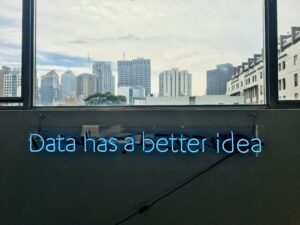Emotional Analysis is Much More Powerful than Sentiment Analysis

The vast majority of sentiment analysis data comes from answers to a survey. It can be pragmatic answers to a single question or series of questions. Sentiment delivers general feelings. It cannot drill down to the specifics of a topic or explore the emotions therein.
I was recently reminded of a Deloitte study that revealed over two‐thirds of study respondents stated third‐party data about them was only 0 to 50 percent correct as a whole. One‐third of respondents perceived the information to be 0 to 25 percent correct. This is unreliable as a single data source to make critical decisions.
What we marketers need is straightforward. We need actionable insights. If we can’t get it from sentiment data where do we find it? The answer to that is emotional analysis data. It has been difficult to find and measure, until now. And is very affordable.
While running various travel sentiment studies undertaken by Tourism Alchemy during COVID‐19, they were able to uncover that, by focusing on real time emotional analysis, a broader range of actionable insights surfaced. Then, by applying Next-Gen micro segmentation to their analysis, certain persona characteristics emerged. They formed distinct persona segments that could be identified and communicated with, painstakingly peeling away the layers of the research onion.

This breakthrough emotional analysis research has tremendous implications on how marketers can leverage this type of actionable data especially if you are a destination, hotel or marketing agency.
Why is emotion the secret sauce?
Not all research companies are created equally. Most focus on surveys, which tend to deliver negative, positive or neutral responses to a question which supports general sentiment. As the Deloitte study noted, results can be unreliable. In addition, those firms that manage Social Media listening, skim the surface and, as an example, troll Twitter with disregard to context and allow loud and frequent Tweeters to dominate sentiment, but this represents only 2% of the general population.
In my research, I found that Tourism Alchemy uses a proprietary algorithm stack that captures the unfiltered emotions from a variety of social platforms that include Social Media, news sites, and travel forums. Data is normalized to ensure that high‐volume platforms such as Twitter don’t dominate and skew the results. Machine learning and smart humans continuously improve the analysis and uncover hidden insights in the data – all in real time.
NextGen technology that focuses on emotional analysis, has a broader attribution range that, in turn, fuels sentiment. This sets breakthrough standards in emotional drivers, accurately linking topics, and granularity, using industry‐specific models and context‐aware analysis. It provides a deeper understanding of people’s actions and the motivations behind those actions. Capturing this data is a game changer.
In plain speak, imagine watching your favorite Netflix series. A sentiment survey would identify that you like the show. Emotional analysis will tell you why. Emotional analysis tells the more complex story that captures your fuller range of emotions experienced during the episodes that can swing from tears to joyful euphoria.
These finer emotional feelings are the key to help build real targetable personas that can be reached much more effectively. To achieve greater success with engagement, one must go beyond the basics and tap into the emotional drivers of actions and motivators.
As a real time example, the Tourism Alchemy study identified that those who like water sports, enjoy farm‐to‐table dining, micro‐breweries and typically drive to reachable destinations at short notice. This is a group that can be identified and engaged, and would respond positively to a custom message that talks to these characteristics.
Complement this with the “Why” factor of emotionally driven decisions, adds another critical layer to the traveler profile. It suggests that this group is passionate about the environment, nature, sustainable and responsible tourism and this is an emotional lever that can talk to the tone, image and language of messaging. Emotional drivers are not found in surveys and rarely in expensive focus groups. Armed with these aggregated insights, agencies can use established digital targeting tools as a way to better communicate with precision and a defined tone, feel and language.
Key Takeaway: Tapping into affordable NextGen tools to identify emotional triggers and create right fit persona’s will drive increased engagement, loyalty and improve ROI, not just during COVID‐19 but beyond.


